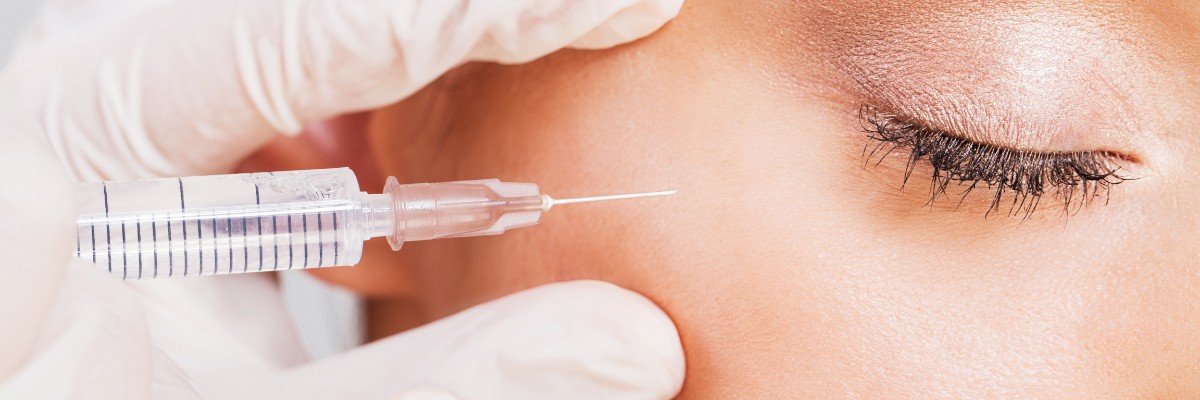Botox has been a buzzword in the cosmetic industry for years. It’s a popular treatment for wrinkles and fine lines, but many people are still uncertain about what it is and how it works. In this article, we’ll delve into the science behind Botox, its uses, benefits, risks, and everything in between.
What is Botox?
Botox, short for Botulinum toxin, is a neurotoxin produced by the bacterium Clostridium botulinum. It was first identified in the late 1800s, and its therapeutic use was discovered in the 1960s. Botox has since been used for a wide range of medical and cosmetic applications, including treating migraines, excessive sweating, muscle spasms, and, most commonly, reducing the appearance of wrinkles.
How does Botox work?
Botox works by blocking nerve signals to the muscles, effectively paralyzing them. When injected into specific muscles, Botox prevents them from contracting, which smooths out the wrinkles that are caused by repetitive muscle movement.
The effects of Botox typically last between three to six months, after which the body gradually breaks down the toxin, and the muscles start functioning again. The duration of the effects can vary depending on the amount of Botox injected, the strength of the muscles, and the patient’s individual metabolism.
What are the uses of Botox?
Cosmetic uses of Botox
Botox is most commonly used for cosmetic purposes to reduce the appearance of wrinkles and fine lines, particularly those that are caused by repetitive muscle movement. These include crow’s feet around the eyes, forehead wrinkles, and frown lines between the eyebrows.
Botox injections can also be used to treat other facial imperfections, such as a gummy smile, where excessive gum tissue is visible when smiling, and dimpled chins.
Medical uses of Botox
Botox has a wide range of medical applications, primarily in the treatment of muscle-related conditions such as
Chronic migraines
Botox injections are FDA-approved to prevent chronic migraines in adults. The treatment involves injecting Botox into the forehead, temples, and neck muscles to reduce the frequency and intensity of migraines.
Excessive sweating
Botox injections can be used to treat excessive sweating, also known as hyperhidrosis. The toxin is injected into the sweat glands, which blocks the release of the chemical that signals the glands to produce sweat. The effects of Botox for excessive sweating can last up to six months.
Muscle spasms
Botox is also used to treat muscle spasms caused by conditions such as cervical dystonia, blepharospasm, and spasticity. The injections help to relax the affected muscles, reducing pain and stiffness.
Strabismus
Strabismus is a condition where the eyes don’t align properly, causing double vision or a lazy eye. Botox injections can be used to weaken the muscles responsible for the misalignment, which helps the eyes align correctly.
Overactive bladder
Botox can be injected into the bladder muscle to treat overactive bladder, reducing the frequency and urgency of urination.
Crossed eyes
Botox can be used to treat crossed eyes, or squint, by weakening the muscles responsible for the misalignment.
Jaw clenching and teeth grinding
Botox injections can also be used to treat jaw clenching and teeth grinding, reducing pain and tension in the jaw muscles.
Benefits of Botox
Safe and effective
Botox has been used for cosmetic and medical purposes for over three decades, and its safety and efficacy are well established. The treatment is FDA-approved, and side effects are usually mild and temporary.
Non-surgical
Botox is a non-surgical procedure, which means that it does not require incisions or anesthesia. This makes it a popular choice for people who want to improve their appearance without the risks and recovery time associated with surgery.
Quick procedure
Botox injections are a quick procedure that usually takes less than 30 minutes. Patients can return to their normal activities immediately after the treatment.
Natural-looking results
Botox injections can produce natural-looking results, reducing wrinkles and fine lines without giving the face an artificial or frozen appearance.
Versatility
Botox has a wide range of medical and cosmetic applications, making it a versatile treatment that can address multiple concerns.
Risks and side effects of Botox
Botox is a safe treatment, but like any medical procedure, there are potential risks and side effects to consider. Some of the common side effects of Botox injections include:
- Bruising, redness, and swelling at the injection site
- Headaches
- Nausea
- Flu-like symptoms
These side effects are usually mild and temporary, lasting only a few days. However, more severe side effects can occur, such as:
- Difficulty swallowing or breathing
- Drooping eyelids or eyebrows
- Muscle weakness
- Allergic reaction
To minimize the risks of Botox injections, patients should only receive the treatment from a qualified and experienced healthcare professional. Patients should also inform their healthcare provider of any medical conditions or medications they are taking before the treatment.
Is Botox right for me?
Botox injections can be an effective treatment for reducing wrinkles and fine lines and treating certain medical conditions. However, it may not be suitable for everyone. People with certain medical conditions, such as muscle or nerve disorders, may not be good candidates for Botox injections.
It’s essential to have a consultation with a qualified healthcare professional before undergoing Botox treatment. During the consultation, the healthcare provider will evaluate your medical history, examine your skin, and discuss your expectations to determine if Botox is right for you.
Botox is a popular and versatile treatment that can improve the appearance of wrinkles and fine lines and treat various medical conditions. While it’s a safe and effective treatment, patients should be aware of the potential risks and side effects and have a consultation with a qualified healthcare professional before undergoing the treatment.
It’s also essential to have realistic expectations for the treatment. Botox can produce natural-looking results, but it’s not a permanent solution and requires maintenance treatments to maintain the effects. With proper care and management, Botox can be an effective tool for improving both cosmetic appearance and medical conditions.




